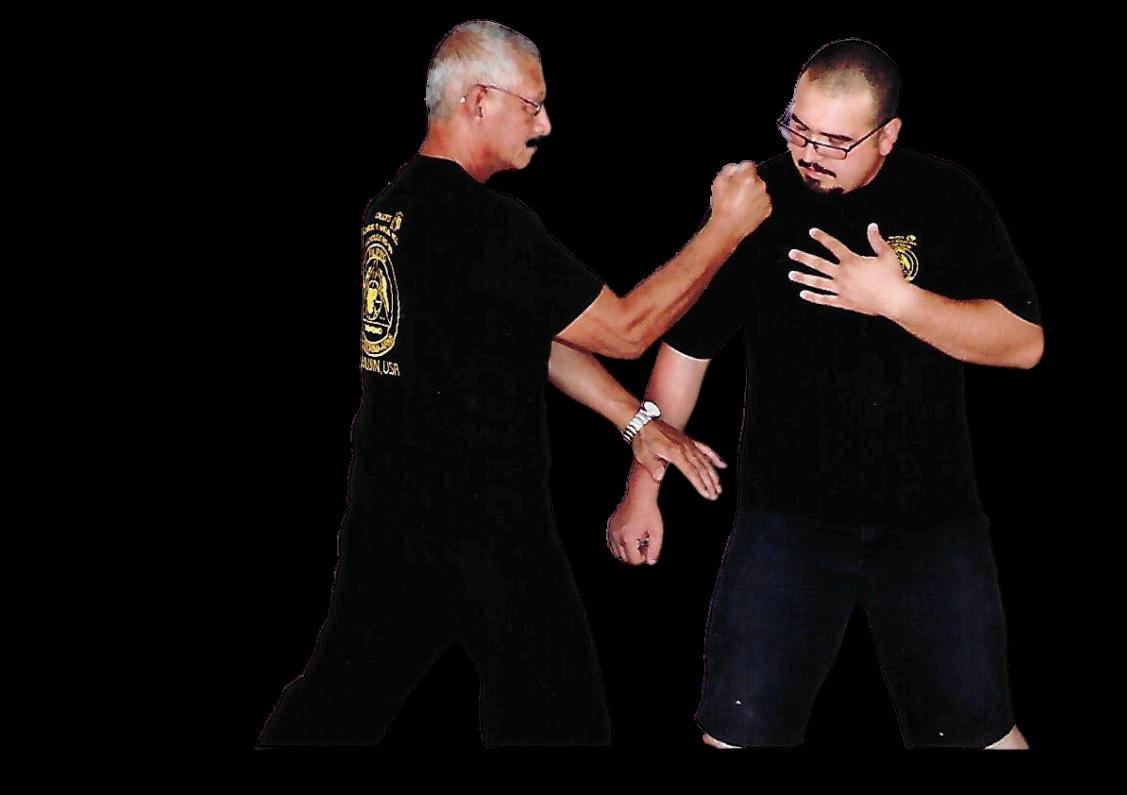
5 minute read
KALI-JKD
Written by Chuck Gonzaga / Allen Wooodman
Photograph by Chuck Gonzaga & Robert Gonzaga
As the sun set over the horizon in the late 1980s, a new chapter in the chronicles of martial arts began to unravel, authored by a visionary martial artist named Ted Lucaylucay.
Drawing upon the rich tapestry of Jeet Kune Do (JKD) principles, laid down by the legendary Bruce Lee, Lucaylucay embarked on a journey to forge a unique path, one that would lead to the birth of Temujin martial arts.
JKD's philosophy of absorbing the useful, discarding the useless, and adding uniquely one's own, became the cornerstone of Temujin. However, Lucaylucay's genius lay in his ability to infuse these precepts with a fresh perspective, drawn from his deep understanding of Filipino Martial Arts and other combat systems. Thus, Temujin was not merely an extension of JKD but a distinct evolution, a system that embraced complexity within simplicity.
For the disciples of Ted Lucaylucay, Temujin was more than just a set of techniques to be mastered; it was a philosophy of life.
The art's emphasis on adaptability and fluidity transcended the realms of physical combat and instilled in its practitioners a mindset capable of overcoming life's multifarious challenges.

The impact of Lucaylucay's teachings was profound, creating not just skilled martial artists but individuals imbued with resilience and the wisdom to navigate the vicissitudes of existence.
What sets Temujin apart from other martial arts is its holistic approach to combat and self-defense While most systems specialize in either striking or grappling, Temujin stands as a testament to the power of hybridization, seamlessly integrating aspects of both.
Its training methodology, steeped in practicality, encourages students to confront and adapt to the unpredictable nature of real-world confrontations, making it a formidable art in the sphere of self-defense.
As the years have passed, the seeds sown by Ted Lucaylucay have blossomed into a thriving lineage of martial artists who continue to uphold and propagate the tenets of Temujin.
Through their dedication, Lucaylucay’s uniquely crafted art endures, evolving with each generation yet firmly rooted in the principles espoused by its founder. In the grand annals of martial arts history, the story of Temujin emerges as a beacon of innovation and adaptability, a testament to the enduring legacy of Ted Lucaylucay and his unparalleled contribution to the world of combat arts.
There are very few stories that resonate as vividly as that of Chuck Gonzaga, a relentless pursuer of combat knowledge and technique.
Starting at the tender age of ten with the basics of boxing under the watchful eyes of his father and younger brother Bob, Chuck's journey into the martial arts was nothing short of remarkable.
His early boxing lessons, given by his father who once boxed for extra money in Chicago, laid down the foundation of discipline and strength that would guide him through his life.
As Chuck grew, his martial arts training expanded under the tutelage of Freddy Rumitikada at age 13, diving deeper into the world of boxing. Rumitikada, who was Ted Tabura's uncle and a revered figure in the martial community, introduced Chuck to a new realm of possibilities.
This era marked the beginning of Chuck's exploration into various martial arts disciplines, absorbing knowledge from his uncle by marriage, Moses Pacaldo, who introduced him to kendo, and Gilbert, who imparted judo techniques.
Chuck's service in the Air Force from January 1963 to 1966, meeting Ralph Kaalikai Oliver, his first Kung Fu instructor, Chuck expanded his horizons into Kung fu San Soo. The rich blend of martial arts continued as he ventured into Taekwondo and Sebekka, a unique mix influenced by Wing Chun, Taekwondo, Judo, and Shotokan, taught by the Egyptian Gamel Selim
However, it was Chuck's encounter with Ted Lucaylucay that significantly shaped his path. Discovering that Lucaylucay was teaching in Bakersfield in 1987, Chuck was quick to seek him out, absorbing the intricacies of a blend of Kali, Arnis, and Escrima - combined with his father's teachings on Panantukan "Filipino boxing."
Chuck's dedication was unparalleled, commuting with his wife from Bakersfield to Pasadena for rigorous three-hour sessions, showcasing a commitment that few could match
Chuck's mastering of Lucaylucay's teachings led to a milestone moment in 1990 when he became one of the first among a hand full of students to be certified as Temujin instructors. Witnessed by Lucky Lucaylucay, this certification was a testament to Chuck's dedication, skill, and unwavering spirit.
His journey didn't stop at becoming an instructor; he continued to train with Ted Lucaylucay until his passing in March of 1996, embodying the essence of martial arts - a never-ending pursuit of excellence.
Chuck's story was immortalized in 1992, gracing the cover of The Pocket Stick video, a fitting tribute to a martial artist whose journey wasn't just about mastering techniques but about the relentless pursuit of knowledge, discipline, and the indomitable spirit of martial training.










